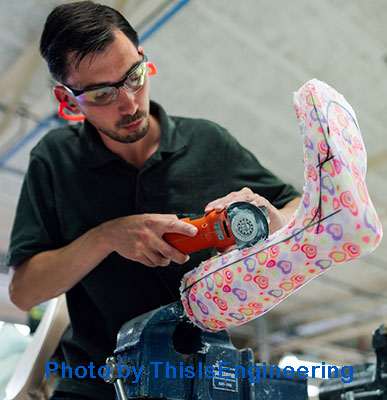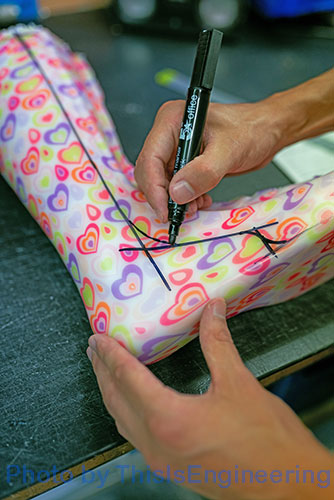What is an Orthosis?
An orthosis is a custom designed device, which is applied to the external part
of the body to provide support and protection for that particular area of the body.
Orthotics may seem to be a recent medical invention, but did you know these corrective devices have been utilized for over three thousand years? The earliest examples of orthotics used to treat bone, joint, and muscle impediments originated in the Iron Age, around 1200 BCE.
The first “orthotics” dates back at least 2,000 years with underfoot shoe cushioning. Layers of wool were placed inside the sandals to give relief to foot fatigue or strain. The first recorded use of an “arch support” orthotic dates back to 1865, introduced by Everett H. Dunbar of Bridgewater, MA.
ORTHOTICS ( BRACES )
An externally applied device (brace), which supports or assists the musculo-skeletal system particularly the joints; hip, knee, ankle, elbow.
Lower Extremity
- Ankle Foot Orthosis (AFO)
- Knee Ankle Foot Orthosis (KAFO)
- Hip Knee Ankle Foot Orthosis (HKAFO)
- Knee Orthosis (KO)
- Foot Orthotics (FO)


Commonly prescribed Orthotic Devices
The design, materials and function of the orthosis are based on a patient assessment, including their medical history, biomechanical principles and the individual needs of the user.
The Goal of Orthotics
The goal of successful orthotics is to increase functional efficiency of the subject during acute, or long-term injury. This includes soft-tissue, bony injuries, and changes due to neurological changes.
Orthotic Devices can be an effective adjunct alongside physiotherapy techniques such as stretches, muscle strengthening, gait, balance training, along with reach & grasp strategies.
Several considerations are involved when choosing the best orthotic device for the given client:
- What are the patient’s goals?
- What are the specific impairments impacting on their function (thinking of head-to-toe and gait analysis).
- Are impairments the result of soft-tissue changes? Can they be changed with therapy input?
- Is a walking aid needed?
- Does the injury need to be protected from particular movements?
- Can an orthotic improve the efficiency of an activity?
- Can the patient cope with any adjuncts given?
Orthotics can be pre-made or customized, depending on the patient’s needs.
Advantages
Lower limb: Influence both swing and stance phase of gait.
- Prevent or correct deformity and reduce pain during weight-bearing
- Improve the efficiency of gait and maintain balance
- Improve base of support / lateral support
- Reduce need for compensation of ipsilateral and contralateral limbs and secondary pain
- To facilitate training in skills
Upper limbs: Can be used after an injury to prevent further injury, or reduce pain by supporting an injured limb.
- Prevent or correct deformity reducing pain and maximising function in reach and grasp tasks.
- Improve the efficiency of reach and grasp tasks
- Offload an injured limb to allow healing
- Reduce need for compensation of ipsilateral and contralateral limbs and secondary pain
- Improve role of the upper limb in maintaining balance
Spine: Stabilise spinal fractures to allow the patient to return to some normal activities (although they may be restricted) and protect the spinal cord.
Design, structure, and fitting an orthosis can be a complex process.
3 Steps to Create an Orthosis
-
1
Assessment
Medical, physical, bio-mechanical, muscle strength, proprioception, and sensation
-
2
Design & Manufacturing
materials, construction, suspension, and cosmesis
-
3
Fitting and Evaluation
anatomical fit, function, easy to don/doff, comfortable to wear